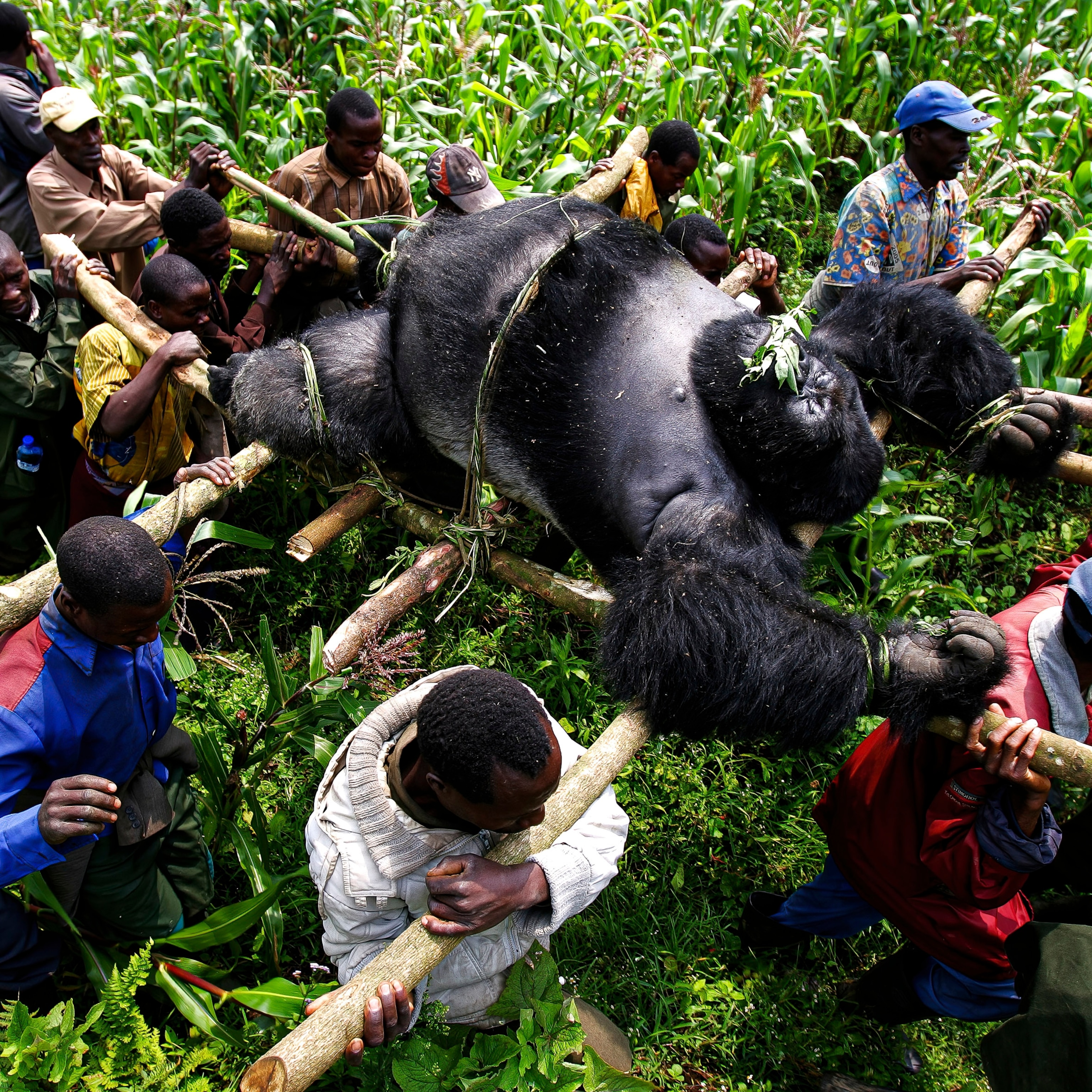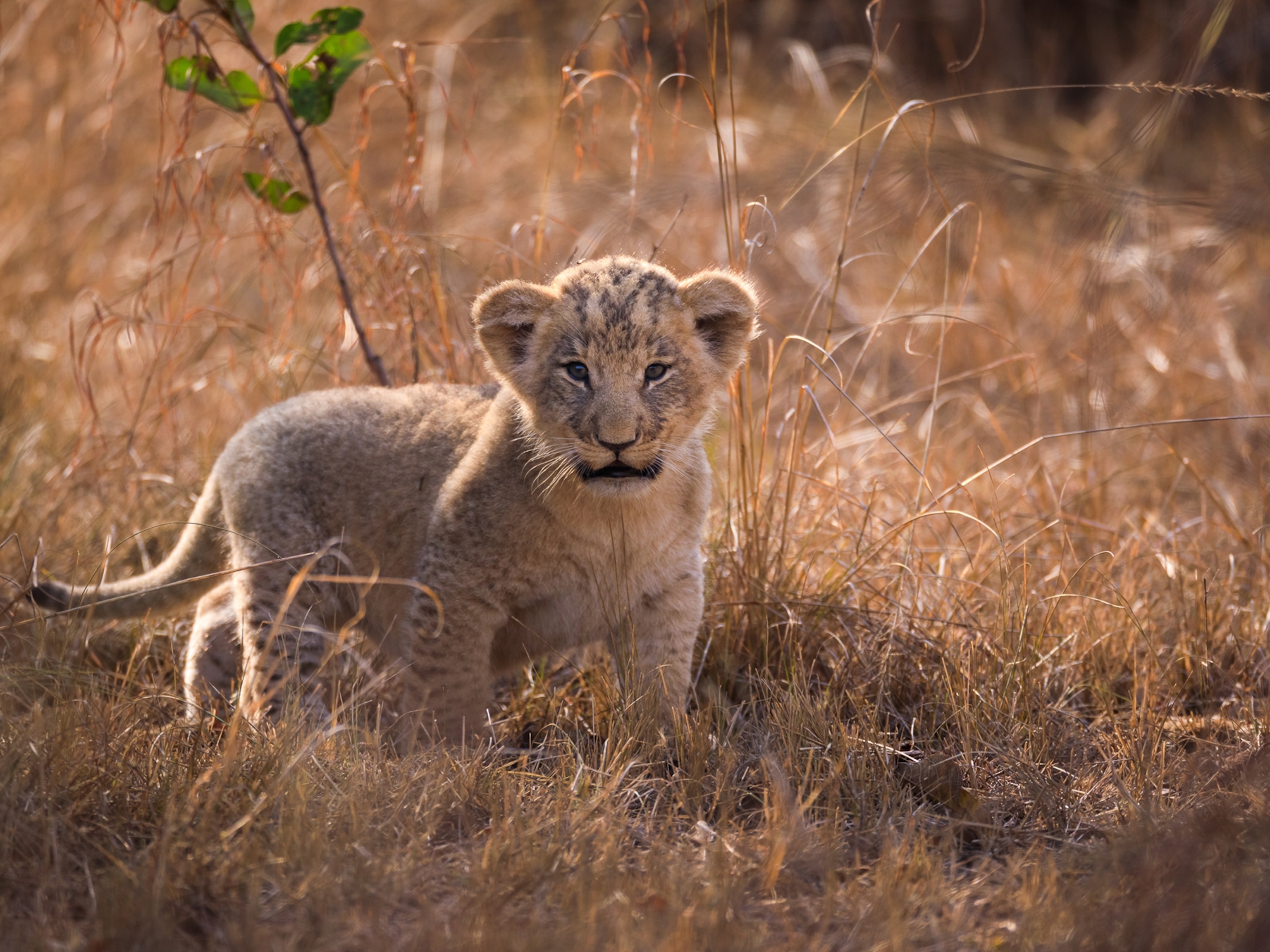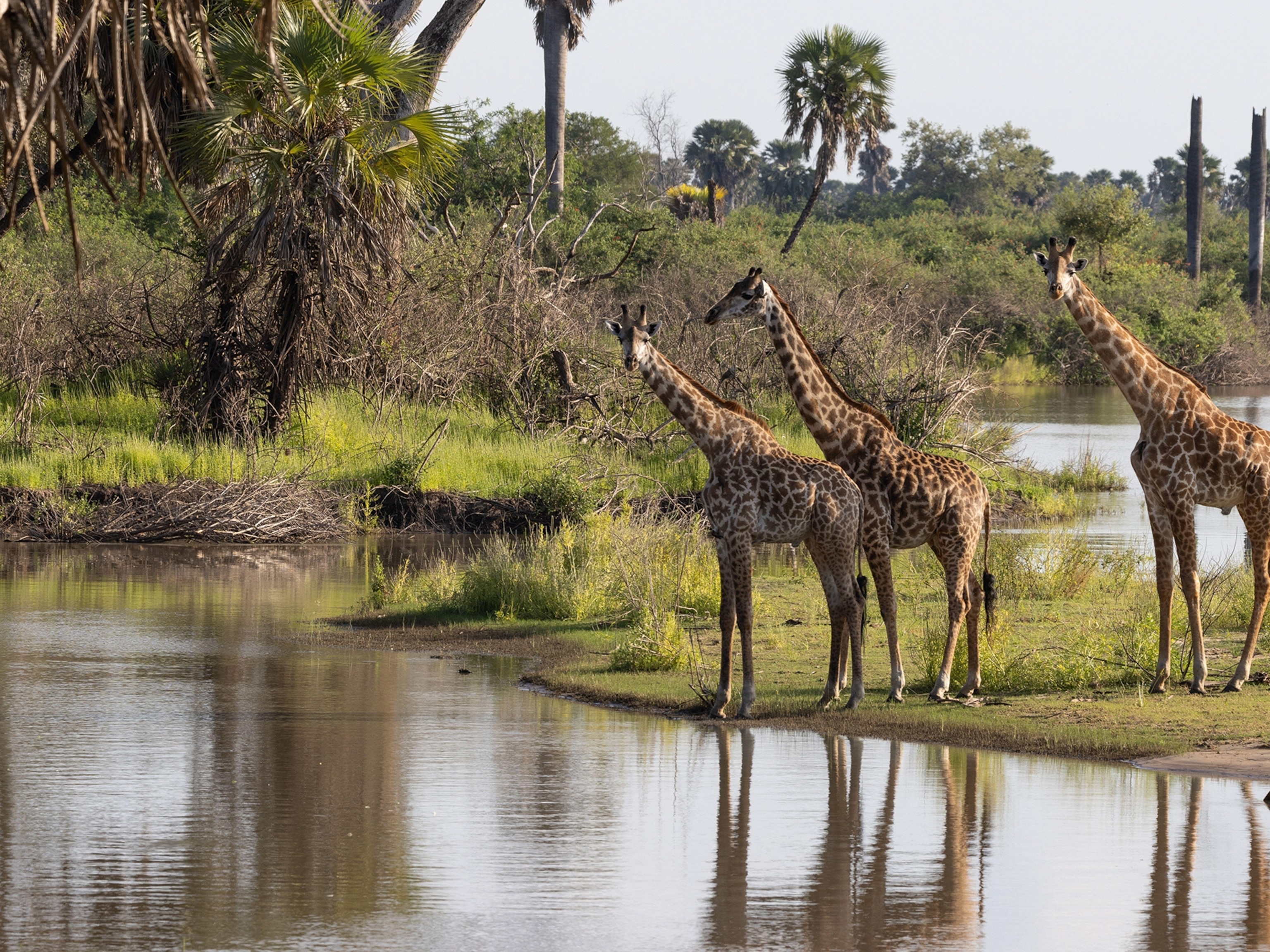
Meet the First Female Rangers to Guard One of World's Deadliest Parks
Women have joined the paramilitary organization tasked with defending some of the last mountain gorillas in the wild.
VIRUNGA NATIONAL PARK, Democratic Republic of Congo — African buffaloes are notoriously aggressive and known to kill people. So when wildlife ranger Aline Masika Kisamya Kisamya came face-to-face with one in the dense forest here, she froze.
And then calmly, quietly, she began to retreat without turning her back. She wasn’t afraid, the 26-year old says: “This is what I’ve been taught to do.”
Virunga National Park, in the eastern part of the Democratic Republic of Congo (DRC), is the most diverse in Africa. Its 3,000 square miles (7,800 square kilometers) embrace forests, snowfields, savanna grasslands, and volcanoes active and dormant.
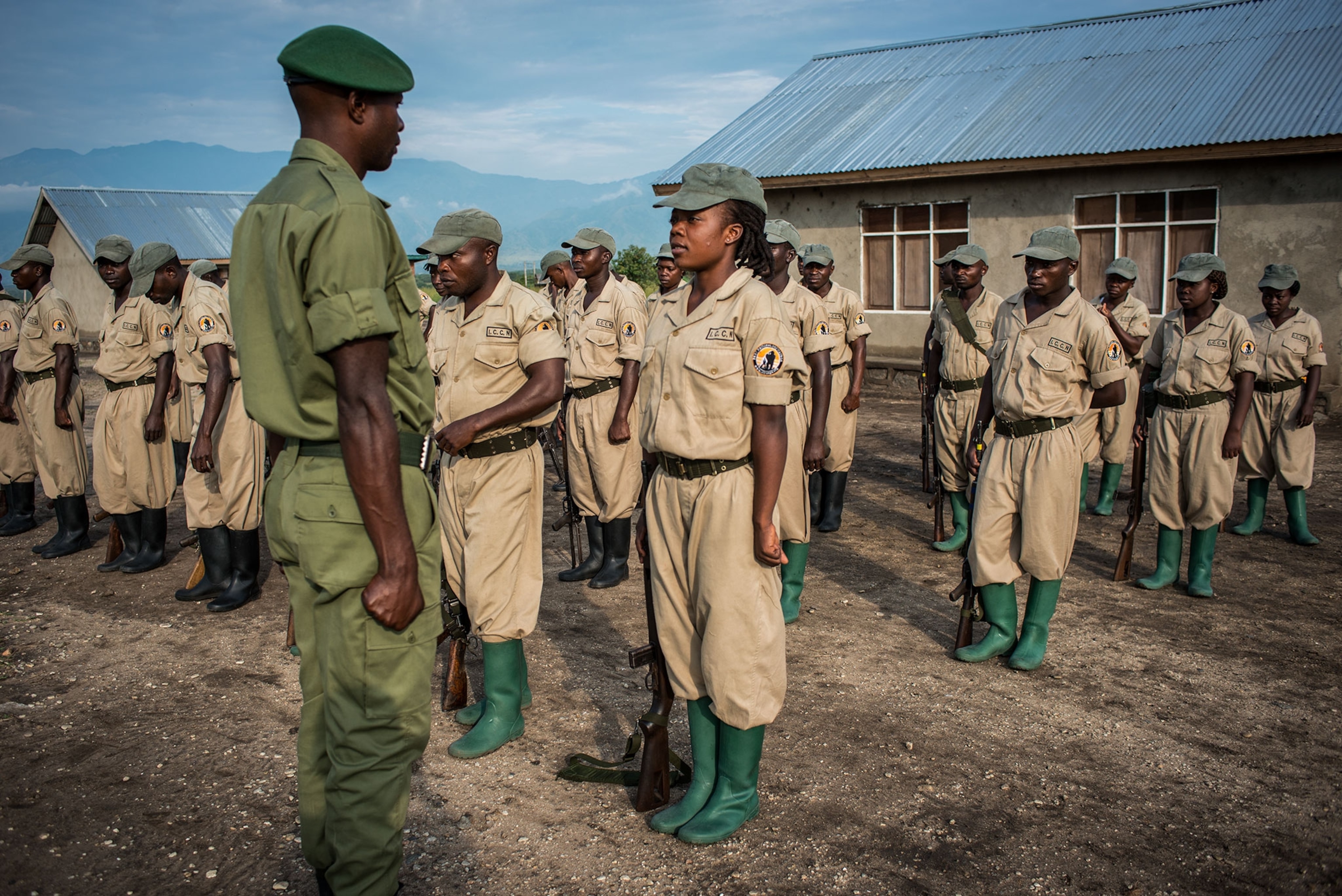
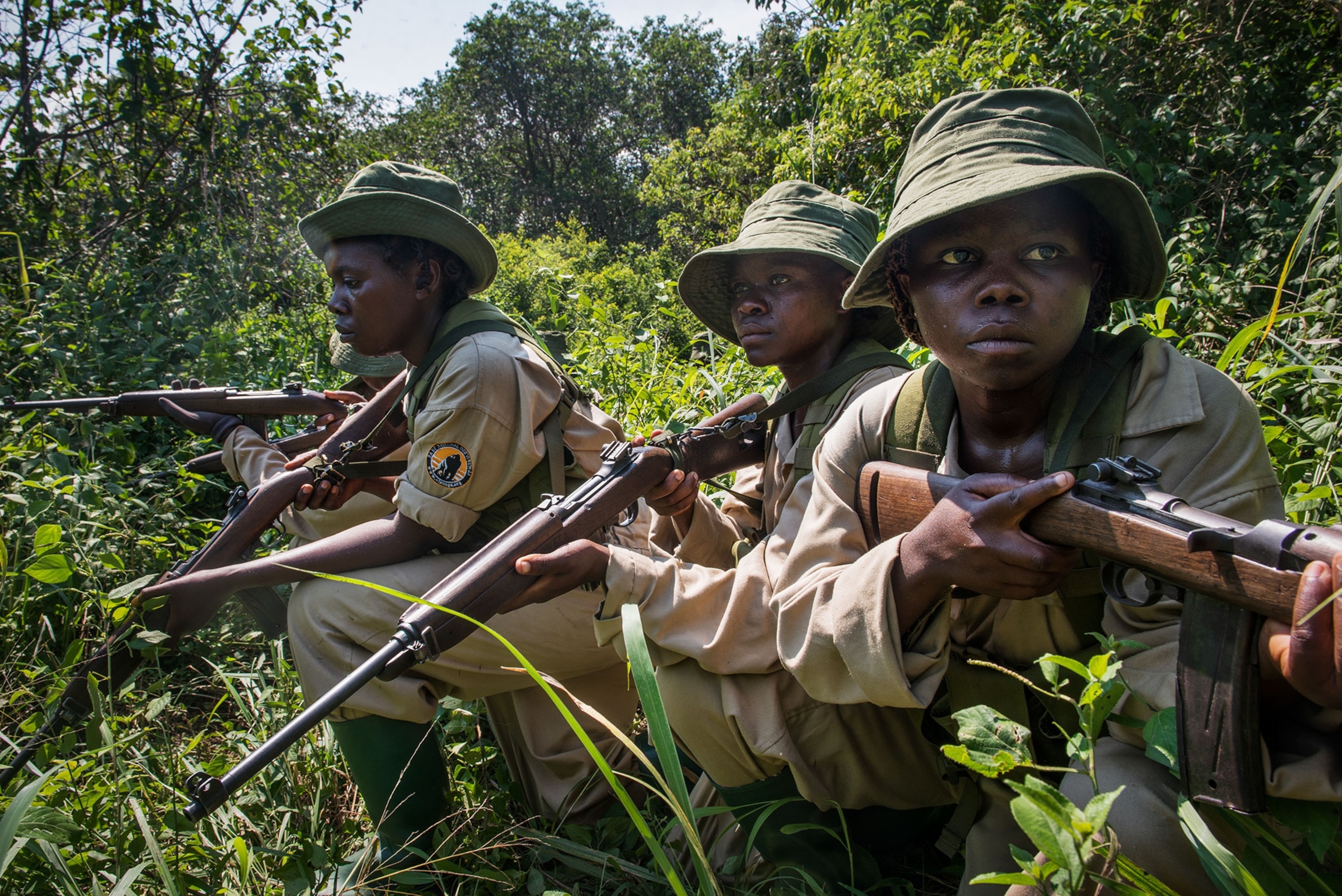
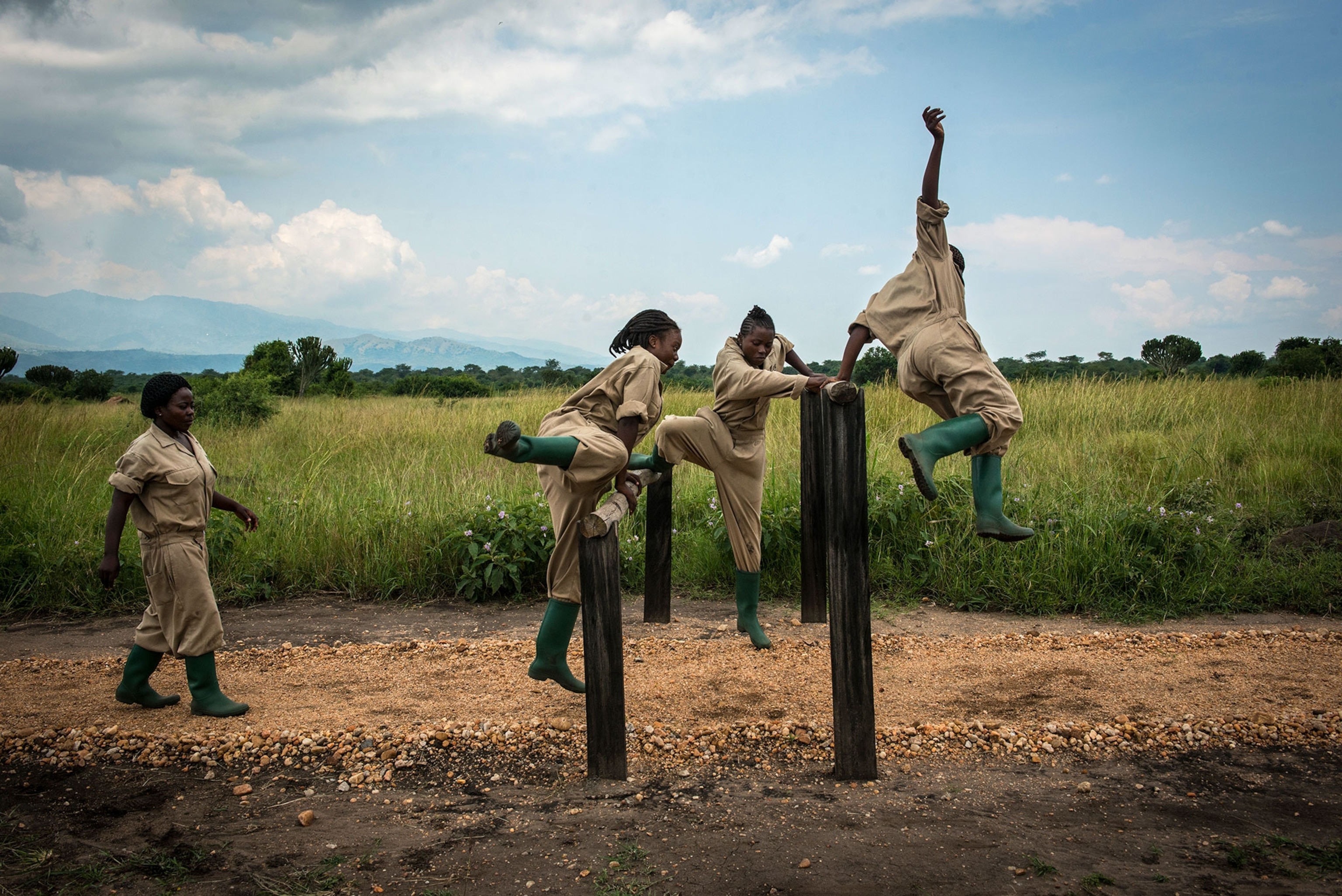
It’s also home to some 300 mountain gorillas—more than a quarter of those that remain on the planet. Beneath Virunga’s surface lies a wealth of minerals and oil, coveted by multinational companies. (Read about the battle to save war-torn Virunga.)
Being a ranger, or “gardien du parc,” in Virunga’s paramilitary conservation brigade is one of the most prestigious jobs in Eastern Congo. It’s also considered the most dangerous job in wildlife: Since 1996, more than 150 Virunga rangers have been killed in the line of duty.
Women had applied before to become Virunga rangers, but none had passed the rigorous selection process and subsequent training—until January 2014, when Kisamya and her cohort of three other women officially began their duties.
“They’re tough,” Emmanuel de Merode, director of Virunga National Park, says of the women. “We don’t make them any concessions. We make it as hard as it would be for a male ranger, and they appreciate that, and they thrive on it.” (Read an interview with de Merode, a Belgian prince fighting to save gorillas.)
Kismaya excelled right away and by the end of that first month was promoted to become the park’s first female section commander, with six men and one other woman under her authority.
She works up to 24-hour shifts, guarding visitors, escorting tourists, and patrolling deep in the park. It’s not just wild animals she has to worry about: Rangers must always be prepared for armed animal poachers, illegal loggers, and anti-government rebels based inside the park. Since the early 1990s, Eastern Congo has been wracked by a civil war in which nearly 5.5 million people have died and more than two million displaced.
Lure of the Trees
It wasn’t danger or adrenaline that compelled Kisamya to become a ranger. It was the trees.
The eldest of nine, she grew up in a farming family on the western shore of Lake Edward to the east of the park. Her interest in trees was piqued by a magazine, Kacheche, which is Swahili for pied wagtail, a bird traditionally thought of as bearing good news.
(Read an interview with a filmmaker who profiled Virunga and see a clip of his movie.)
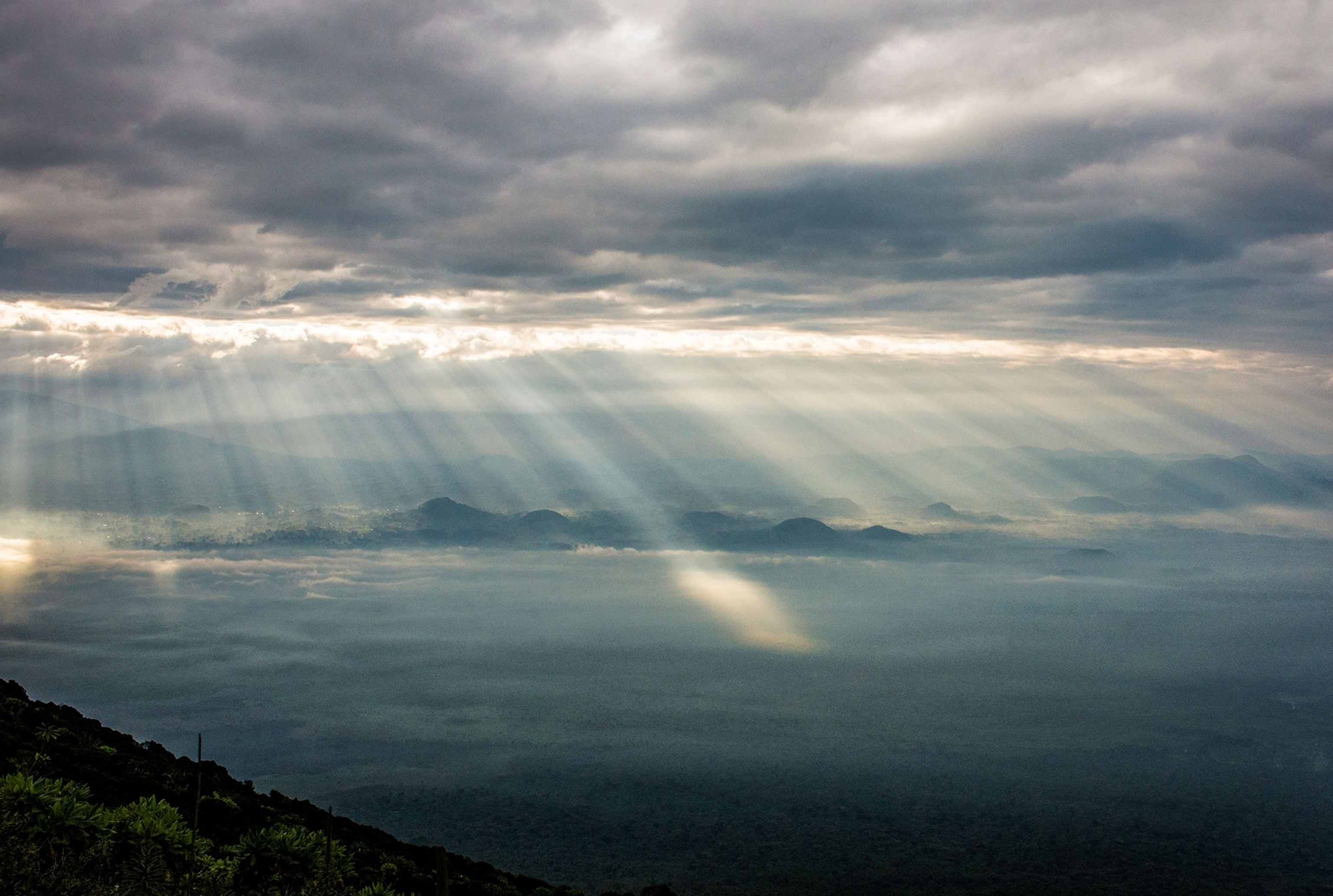
Living on the eastern edge of Africa’s lung, the 500-million-acre (200-million- hectare) Congo Basin rain forest—the second largest oxygen supplier on the planet—Kisamya became captivated by the dense forest, with its rare evergreens that tower more than 150 feet above the ground.
The Belgian government had funded the magazine to draw schoolchildren’s attention to the value of their natural environment and the threats that Virunga and Congo’s other World Heritage properties face.
Being a ranger in Virunga is considered the most dangerous job in wildlife.
As she led a party of visitors on a trek through Virunga’s Mikeno sector to see mountain gorillas, she told me she’d been drawn to learn more about the forest. “You see it from the outside, and it’s so beautiful—I wanted to know its secrets.”
Kisamya says she knew next to nothing about the gorillas before starting as a ranger, but now leading people to see them is the biggest perk of the job. “They’re very rare animals, and so big, so robust. I love to watch visitors’ reactions—they’re amazed by them.”
On our two-hour hike to find the Bageni gorilla family (named after the head honcho silverback), Kisamya hopped lightly over waist-high fallen trees and threaded expertly through walls of groping vines.
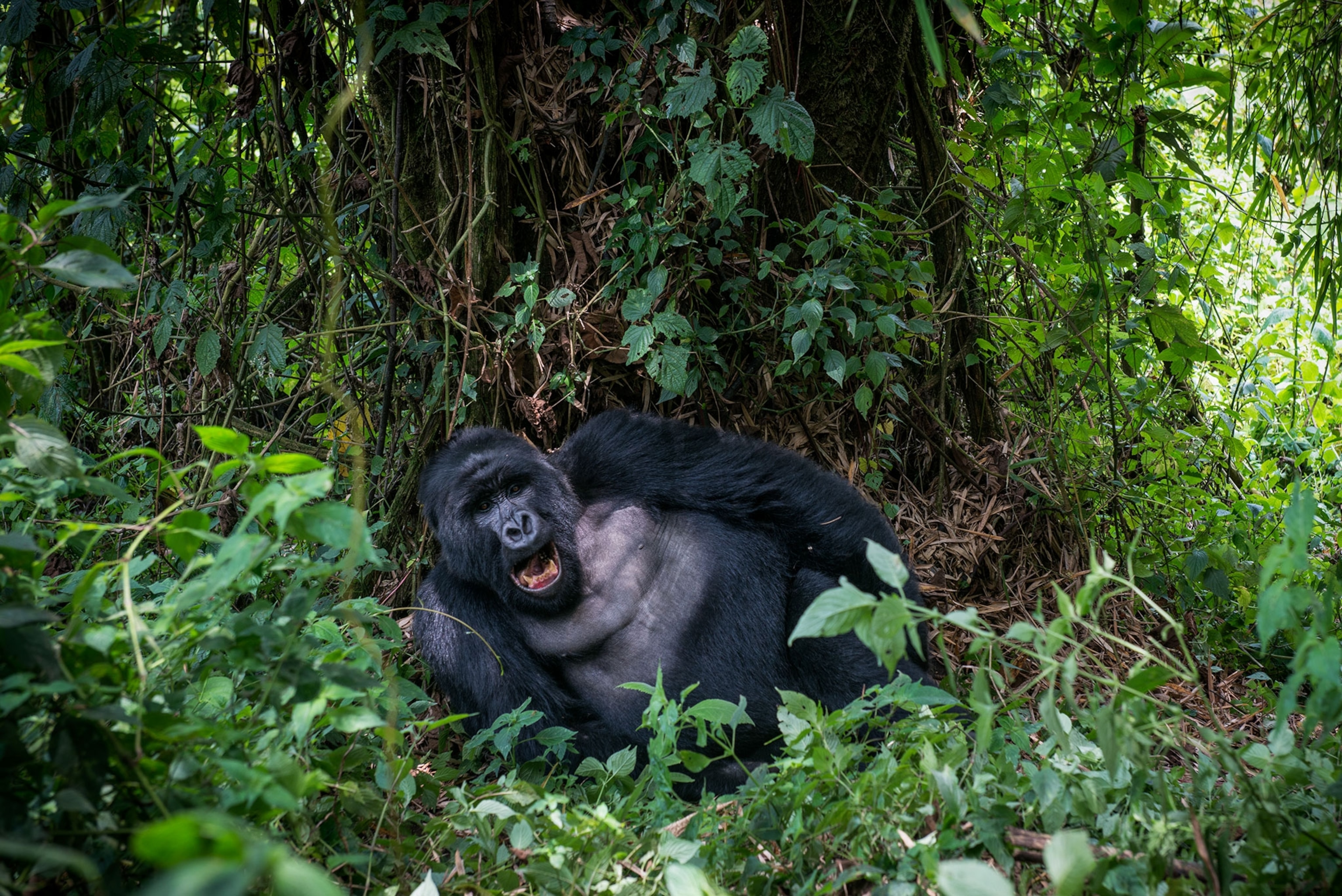
When we were close enough to see the Bagenis, one exuberant young black-back started bouncing up and down, pounding his chest. He launched a mock charge on the startled clutch of gawking humans.
Kisamya moved quickly to block his path. Bending down, she faced him squarely and beat the ground, grunting. Satisfied by her confident riposte, the gorilla relaxed. He’d been testing us, Kisamya explained.
A Ranger Learns Lessons of War
Gilbert Dillis, the head of security at Virunga and a former Belgian commando, says that the female rangers, who now number 14, are “very motivated.” And that Kisamya, in particular, had demonstrated leadership qualities.
Every Virunga ranger gets knocked into shape by a six-month boot camp led by Belgian commandos in open savanna 125 miles north of the park’s gorilla sector.
Kisamya froze, assessed the situation, and quietly began to retreat without turning her back.
Undergoing the same exercises as their male counterparts, the women learn battle-zone tactics and remote survival techniques. They sleep in the open alongside their Kalashnikovs, their names etched into the guns’ barrels.
Solange Kahumbu Malilisa is a 24-year-old ranger who graduated with Kisamya and has since been promoted to team leader. (Each of the park’s 60 sections has two team leaders.)
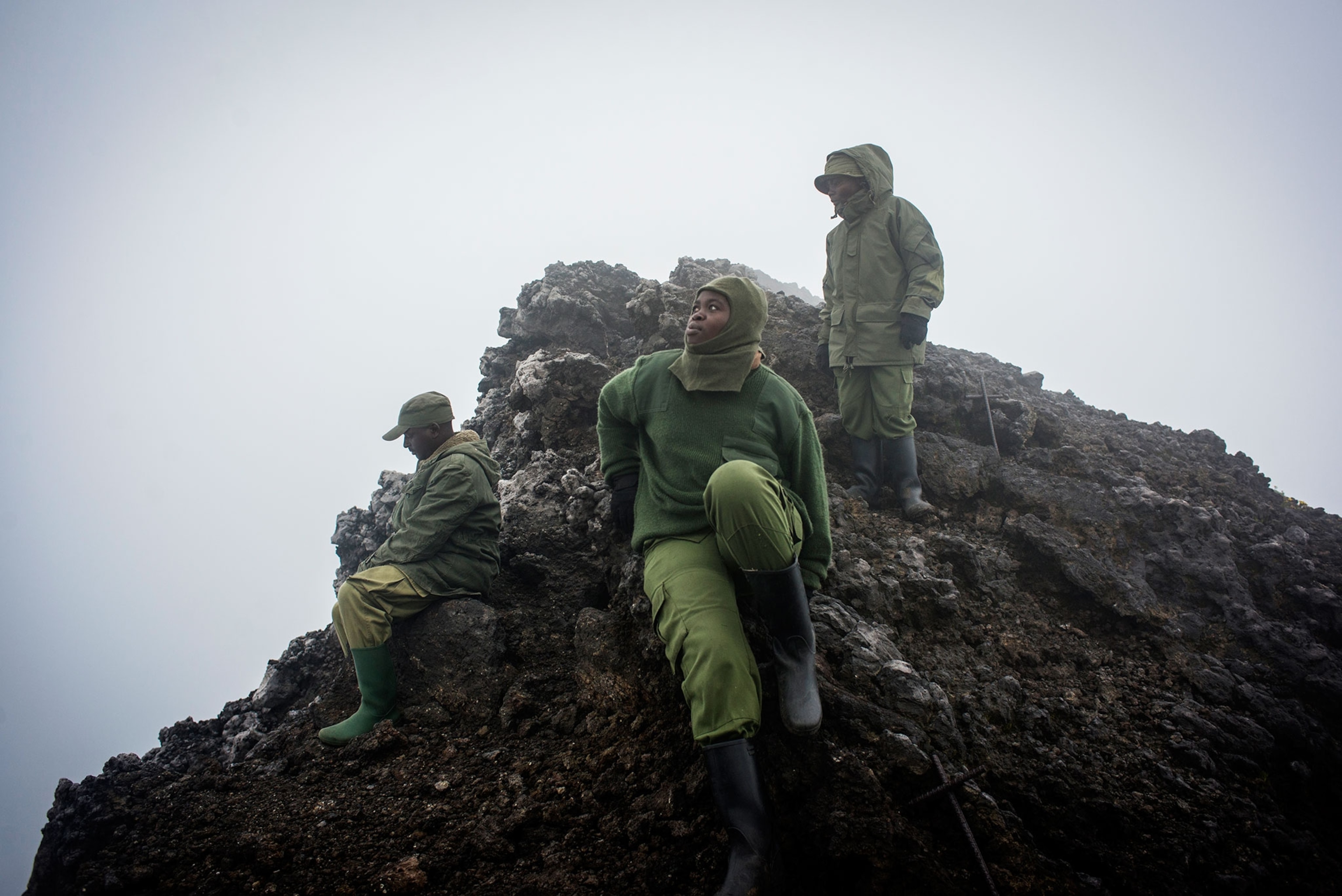
Soon after Malilisa applied for the ranger job, the civil war put her survival instincts to the test.
It was early 2012, and a newly formed rebel militia, M23, was capturing territory in Eastern Congo, including parts of Virunga. By July, the rebels were attacking Malilisa’s home town of Kiwanja. She was with her younger siblings in their house when heavy gunfire broke out a few hundred yards away. Her parents, who are farmers, were working in the fields.
Armed men swept through her quiet village neighborhood at the edge of town. At first, the rebels targeted government soldiers, but that changed when a soldier took refuge in someone’s house and started shooting.
To the rebels, gunfire from a private house meant they had license to shoot at anyone, including civilians. Their bullets killed a number of Malilisa’s neighbors, including a single mother and her two children.
Malilisa and her siblings hid behind a flimsy wooden door until there was a lull in the fighting. They then ran to their grandmother’s house, half a mile away.
Malilisa’s parents raced back to the village, finding it destroyed and many of their neighbors killed.
Meanwhile, Malilisa’s parents raced back to the village, finding it destroyed and many of their neighbors killed. “When my parents went back to the house, they thought it was to collect our bodies,” Malilisa said, fingering the safety catch on her rifle.
Embarking on ranger training just over a year later, she picked up a gun—a Kalashnikov—for the first time. “I was scared to touch it,” she recalled. She hasn't yet had to use it, but if the need arises, she’ll be ready.
The International Women’s Media Foundation supported Jessica Hatcher and Monique Jaques's reporting from the Democratic Republic of the Congo.
Follow Jessica Hatcher on Twitter and Instagram.
